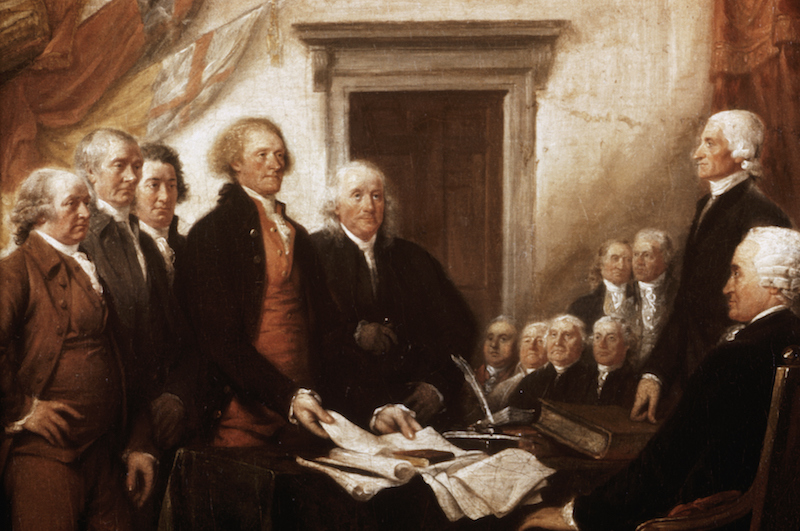An Engrossed Copy
As many readers now know, CARRYING INDEPENDENCE is about the importance of gathering signatures on a single copy of the Declaration of Independence. Today’s date was a significant moment in history that indicated to me that I could indeed write such a story.
July 19th, 1776, was the day the Continental Congress agreed to have one “engrossed” copy of the Declaration made. One readable, handwritten copy, signed by all. Why?
New York Finally Approved the Declaration
Ten days earlier, on July 9th, New York representatives finally agreed to the wording of the Declaration—the last of 13 states to do so. This mattered because their approval finally made the separation from Britain unanimous. But words are hollow without a contract everyone will sign.
Would you agree to move out of your home, while only verbally agreeing the guy moving in could take over? Nope. You’d ensure he came in and signed some papers assuming the mortgage, and absolving you of responsibility. You’d want all parties in agreement.
So did the Congress.
If you really want to see how we began, put down the Constitution and pick up the Declaration.

So what? Why does this decision and day in history matter now?
In a country that too often operates divisively and viciously, we need to remember that this nation began by coming together. By compromising. By being optimistic in the face of grave danger and the real possibility that we might not stand a snowball’s chance of surviving the heat. We began by laying down our lives and our fortunes and our sacred honor for the sake of each other—no matter which colony or country we were born in.
If you really want to see how we began, put down the Constitution and pick up the Declaration. When you read it—actually study it— you’ll find that our country, with this document as evidence, was founded not upon seeking what was best for us individually.
Even with all its flaws, the Declaration was an agreement to collectively be better. And not just for Americans, but for and before “a candid world.”
* * *
Reader Insider Note: I’ll admit it… not before this book had I really studied the Declaration. But with chapter 23 of CARRYING INDEPENDENCE, I wrote myself into a corner. George Wythe, the man who taught Jefferson, was to explain to Nathaniel, my protagonist, the reasoning behind the Declaration. Not the intent. The reasoning.
Of all my chapters and scenes, it took me the longest to write this one—days and days of researching the ideologies, reviewing academic interpretations, and studying the document itself. At times I wondered if I was smart enough to grasp and then convey the meaning of it all. And then I decided I would simply allow Wythe to explain it to me as if I were Nathaniel—a nonacademic, uncertain yet hopeful, resident now living in a foreign land.
. . . . . . . . . . . . . . . . . . . . . . . . . . . . . .
For more history nerd posts like these, subscribe to the blog. Guest posts are welcomed and encouraged. Contact me for details.
For behind-the-scenes author-related news, giveaways, and to find out where I might be speaking near you, subscribe to my e-publication, CHASING HISTORIES.
